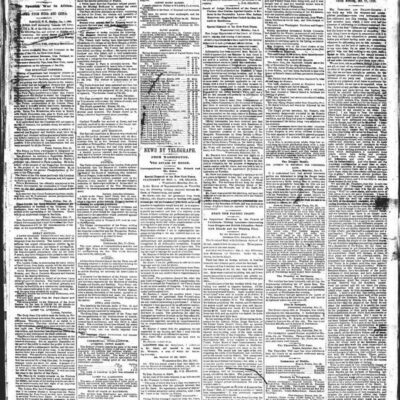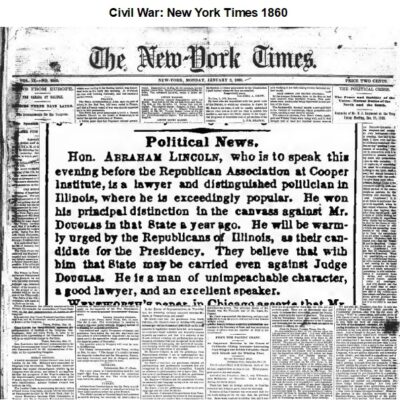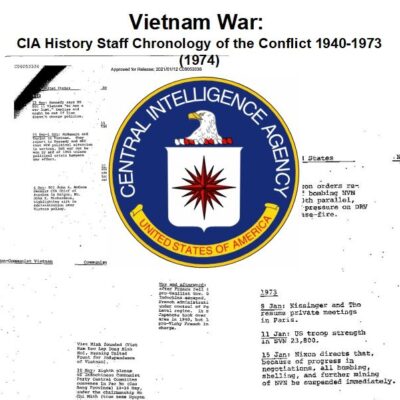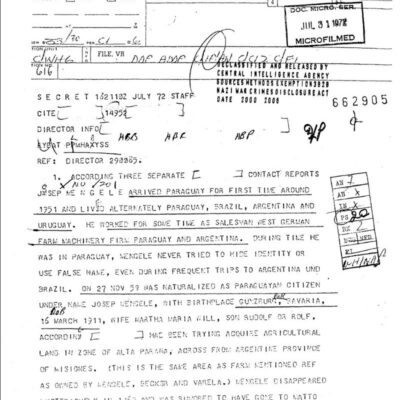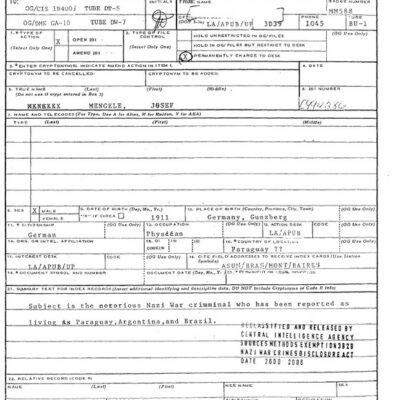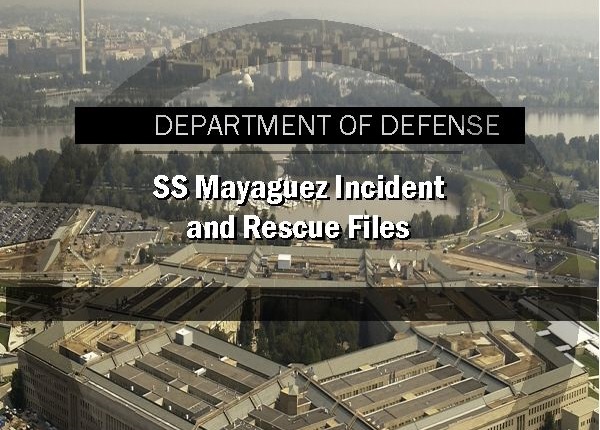
Description
SS Mayaguez Incident: A Timeline and Personnel Overview
Timeline of the SS Mayaguez Incident
May 12, 1975:
- Morning: The U.S. merchant ship SS Mayaguez, with a crew of 39 and carrying commercial cargo and supplies for American servicemen and the U.S. embassy in Thailand, is seized by Khmer Rouge gunboats in international waters in the Gulf of Thailand, approximately 60 nautical miles southwest of Cambodia near the Poulo Wai Islands.
- The initial U.S. military response is limited to surveillance of the captured vessel.
May 13, 1975:
- Early Morning: U.S. Navy P-3 reconnaissance aircraft spot the SS Mayaguez near Poulo Wai Island.
- Later Morning: The Mayaguez is moved by her captors and steams towards Koh Tang Island.
- Efforts are initiated by the U.S. to secure the release of the ship and its crew through diplomatic channels, but these efforts prove unsuccessful.
- U.S. military forces are ordered to undertake a rescue mission.
May 14, 1975:
- Planning and preparation for the rescue mission intensify within the U.S. military command.
May 15, 1975:
- Three days after the seizure, six U.S. Air Force helicopters are dispatched towards Koh Tang Island as part of the rescue operation.
- As one of the helicopters approaches the eastern beach of Koh Tang Island, it comes under heavy enemy fire.
- The helicopter crashes into the surf with 26 men on board.
- Approximately half of the personnel from the crashed helicopter are rescued at sea, leaving 13 unaccounted-for.
- U.S. Marine Corps forces are inserted onto Koh Tang Island to search for the crew of the Mayaguez.
- U.S. military operations also include the reboarding of the SS Mayaguez (although the crew was not onboard) and air strikes against military targets on the Cambodian mainland, intended to pressure the Khmer Rouge.
- The crew of the SS Mayaguez is eventually located on another island (believed to be Koh Rong Samloem) and are subsequently recovered.
Post-Incident:
- The recovery of the SS Mayaguez and its crew is achieved.
- The incident results in the deaths of 41 American servicemen.
- The seizure and rescue operation garner significant public attention in the United States, viewed by some as disproportionate to the military activities involved but significant in terms of U.S. credibility and self-respect following the fall of South Vietnam and Cambodia to communist control the previous month.
- The Mayaguez incident becomes a significant case study in the context of the War Powers Resolution, enacted in 1973. The rescue operation is the only instance by 1999 where a presidential report to Congress cited Section 4(a)(1) of the Resolution, potentially triggering its time limit for U.S. forces withdrawal.
Cast of Characters
- Crew of the SS Mayaguez: The 39 American merchant mariners who were captured along with their ship. Their names are not individually listed in the provided excerpts, but their well-being was the primary objective of the U.S. response.
- Captain of the SS Mayaguez: The individual responsible for the vessel and its crew. Their name is not mentioned in the provided excerpts.
- U.S. Military Personnel: Numerous individuals from various branches of the U.S. armed forces were involved in the surveillance, planning, and execution of the rescue mission. Specific high-ranking commanders are not named in these excerpts, but the actions of the U.S. Pacific Command (CINCPAC) and the U.S. Pacific Air Force are highlighted.
- Members of the 656th Security Police Squadron (USAF): A significant number of airmen from this squadron were involved in the rescue operation, with 18 enlisted security police among the 23 airmen who died. Their specific roles and names are discussed in the “Background Paper on the Mayaguez Incident: An Enlisted Perspective of a USAF Security Police Tragedy.”
- U.S. Marines: These forces were tasked with the ground assault and search for the Mayaguez crew on Koh Tang Island. Specific units or commanders are not detailed in these excerpts.
- Khmer Rouge Forces: The Cambodian communist forces responsible for seizing the SS Mayaguez and holding its crew. No specific individuals within the Khmer Rouge leadership or forces involved in the capture are named in the provided excerpts.
- Unaccounted-for U.S. Personnel: 13 individuals from the crashed helicopter who were not immediately rescued and whose fate is not detailed in these excerpts.
- American Servicemen (in Thailand): The intended recipients of the commercial cargo and supplies being transported by the SS Mayaguez, highlighting the context of U.S. involvement in the region.
SS Mayaguez Incident and Rescue Department of Defense Files
683 pages of Department of Defense documents covering the SS Mayaguez Incident and rescue.
On 12 May 1975, Khmer Rouge gunboats seized the United States merchant ship SS Mayaguez in international waters, in the Gulf of Thailand. The ship, its captain, and its crew of 39, were captured some 60 nautical miles southwest of Cambodia near the Poulo Wai Islands. The ship was on its way to Thailand carrying commercial cargo and supplies for American servicemen and the U.S. embassy. The initial US military response was limited to surveillance of the ship. In the early morning hours of 13 May, US Navy P-3 reconnaissance aircraft spotted the vessel near Poulo Wai. Later in the morning the Mayaguez steamed to Koh Tang Island under the control of her captors. After efforts to secure the release of the ship and its crew failed, U.S. military forces were ordered to undertake a rescue mission. Three days after the Mayaguez seizure, six Air Force helicopters were dispatched to the island. One of the helicopters came under heavy enemy fire as it approached the eastern beach of the island. The aircraft crashed into the surf with 26 men on board. Half were rescued at sea, leaving 13 unaccounted-for.
The 12 May 1975 seizure of the SS Mayaguez and her crew by Cambodian forces and the subsequent recovery of the ship and crew by US military forces commanded public attention in the United States with an intensity which, on the surface, may have seemed out of proportion to the minor nature of the military activities involved. At the heart of the matter, of course, was not the size of the military operation, but the implications of the ship’s seizure with respect to US credibility and self-respect, particularly in light of previous developments in Indochina and the Vietnam War. The previous month, South Vietnam and Cambodia fell to communist control. The mission to rescue the Mayaguez and its crew took the lives of 41 American servicemen.
Contents include:
After Action Report, US Military Operations, SS Mayaguez & Kaoh Tang Island 12-15 May 1975
Department of Defense after action report on the rescue of the SS Mayaguez and crew. The report includes a narrative summary and covers Defense Intelligence Agency appraisal, outline of the operational concept, personnel causalities, helicopter sorties, losses, and damage, tactical and combat air support, reconnaissance sorties, time line of events, and a listing of verbal and written orders.
Memos: Rescue of the SS Mayaguez & its Crew
A collection of Joint Chiefs of Staff memorandums dealing with the Mayaguez Incident and rescue.
CINCPAC Command History 1975, Appendix VI
Commander-in-Chief U.S. Pacific Command history of the SS Mayaguez Incident.
History of the Pacific Air Forces July 1, 1974 to December 31, 1975
Commander-in-Chief U.S. Pacific Air Force history of the SS Mayaguez Incident.
Fourteen Hours at Koh Tang
A 1976 United States Air Force monograph on the rescue of the SS Mayaguez. The US military operation to recover the SS Mayaguez and her crew consisted of a number of related actions including the reboarding of the Mayaguez, air strikes against military targets on the Cambodian mainland; and insertion of US Marine Corps forces on Koh Tang Island to search for the crew of the Mayaguez. This monograph examines the latter action-operations relating to the insertion and recovery of Marines at Koh Tang Island.
Background Paper on the Mayaguez Incident: An Enlisted Perspective of a USAF Security Police Tragedy.
A 1992 Air Force research paper on the Mayaguez rescue. The rescue resulted in the deaths of 23 airmen, 18 were enlisted security police. This paper discusses at length the role of the 656th Security Police Squadron.
CRS Report for Congress: The War Powers Resolution After Twenty-Five Years
A 1999 report for Congress produced by the Congressional Research Service on the War Power Resolution, also known as the War Powers Act. The War Power Resolution was enacted in 1973. Presidents had submitted 76 reports by 1999 under it, but only one, the Mayaguez rescue, cited Section 4(a)(1), which triggers the act’s time limit for U.S. forces withdrawal. This report reviews selected cases from 1975 to August 1999, including the Mayaguez Incident, that illustrate the various issues and controversies that have surrounded this statute.



